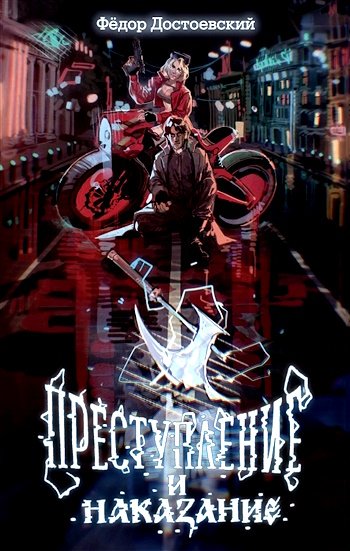14. Lothar Schwab, “Im Labyrinth der Männerängste. Kurt Bernhardts deutsche Filme (1924 –1933),” in Aufruhr der Gefühle: Die Kinowelt des Curtis Bernhardt, ed. Helga Belach, Gero Gandert, and Hans Helmut Prinzler (Munich: Bucher, 1982), 48.
15. Christian Metz, “Trucage and the Film,” Critical Inquiry 4 (summer 1977): 657 – 665.
16. Steve Neale, “‘You’ve Got to Be Fucking Kidding!’ Knowledge, Belief, and Judgement in Science Fiction,” in Alien Zone: Cultural Theory and Contemporary Science Fiction Cinema, ed. Annette Kuhn (London: Verso, 1990), 164.
17. René Clair, “The Art of Sound,” in Film Sound: Theory and Practice, ed. Elisabeth Weis and John Belton (New York: Columbia University Press, 1985) , 92 –95; Michel Chion, Audio-Vision: Sound on Screen, ed. and trans.
Claudia Gorbman (New York: Columbia University Press, 1994), 179.
18. Miriam Hansen, “Early Silent Cinema: Whose Public Sphere?” New German Critique 29 (spring/summer 1983): 156.
19. Antonio Gramsci, Selections from the Prison Notebooks, trans. and ed.
Quintin Hoare and Geoffrey Nowell Smith (New York: International Publishers, 1977), 195.
20. Linda Schulte-Sasse, Entertaining the Third Reich: Illusions of Wholeness in Nazi Cinema (Durham, N.C.: Duke University Press, 1996), 257.
21. Thomas Elsaesser, “Film History and Visual Pleasure: Weimar Cinema,”
Cinema Histories, Cinema Practices, ed. Patricia Mellencamp and Philip Rosen (Frederick, Md.: University Publications of America, 1984), 72.
22. Maurice Elvey’s 1935 remake— entitled Transatlantic Tunnel and based on a screenplay by German exile Curt Siodmak—reverses the breakthrough sequence: Mac Allan’s American crews greet the British workers first.
23. Hans Traub, “Der Film als politisches Machtmittel,” qtd. in Film und Gesellschaft in Deutschland: Dokumente und Materialien, ed. Wilfried von Bredow and Rolf Zurek (Hamburg: Hoffmann und Campe, 1975), 171.
10-C2205-END 8/17/02 3:39 PM Page 283
Notes to Pages 60 – 68
/
283
24. Giselher Wirsing, Der maßlose Kontinent: Roosevelts Kampf um die Weltherrschaft (Jena: Diederichs, 1942), 79.
25. David Bathrick, “Making a National Family with the Radio: The Nazi Wunschkonzert, ” Modernism/Modernity 4, no. 1 (January 1997): 120.
26. Qtd. in Wolfram Wessel, Hörspiele im dritten Reich (Bonn: Bouvier, 1985), 122; also qtd. and trans. in Bathrick, “Making a National Family,” 116.
27. Hilmar Hoffmann, The Triumph of Propaganda: Film and National Socialism, 1933 –1945, trans. John A. Broadwin and V. R. Berghahn (Providence: Berghahn, 1996), vii.
28. Rudolf Arnheim, Radio (London: Faber and Faber, 1936), 32.
29. Ibid., 72.
30. Ibid., 235.
31. Herbert Marcuse, “The Struggle against Liberalism in the Totalitarian View of the State,” Negations: Essays in Critical Theory, trans. Jeremy J. Sha-piro (Boston: Beacon, 1968), 3 – 42.
32. Traub, “Der Film als politisches Machtmittel,” 171.
33. See Michael Ryan and Douglas Kellner, “Technophobia,” in Alien Zone, 58 – 65.
34. See Mary Kiersch, Curtis Bernhardt: A Directors Guild of America Oral History (Metuchen, N.J.: Scarecrow Press, 1986), 58.
35. Jeffrey T. Schnapp, Staging Fascism: 18 BL and the Theater of Masses for Masses (Stanford: Stanford University Press, 1996), 90 (Schnapp’s italics).
36. Ernst Jünger, Der Arbeiter: Herrschaft und Gestalt. Sämtliche Werke: Zweite Abteilung (Stuttgart: Klett-Cotta, 1981), 8:126.
37. Claudia Lenssen, “Durchlöcherte Finsternis: Das Melodramatische bei Curtis Bernhardt,” in Aufruhr der Gefühle, 15–16.
38. Many of the film’s first reviewers were clearly irritated by Mac Allan’s clipped heroism in the end. The film, some argued, placed too much weight on an idea and too little on human drama. See Film-Kurier, January 17, September 18, and November 4, 1933, as well as the review in Deutsche Filmzeitung, November 19, 1933.
39. Ernst Bloch, “Die Angst des Ingenieurs,” in Gesamtausgabe (Frankfurt /M.: Suhrkamp, 1965), 9:347 –358.
40. Eric Rentschler, “The Elemental, the Ornamental, the Instrumental: The Blue Light and Nazi Film Aesthetics,” in The Other Perspective in Gender and Culture: Rewriting Women and the Symbolic, ed. Juliet Flower MacCan-nell (New York: Columbia University Press, 1990), 175.
41. Klaus Theweleit, Male Fantasies, trans. Stephen Conway, 2 vols. (Minneapolis: University of Minnesota Press, 1987).
42. Marcia Klotz, “The Question of Fascist Erotics,” Faultline: Interdisci-plinary Approaches to German Studies 1 (1992): 69 – 82.
43. On the linkage of homosexuality and fascism see Andrew Hewitt, Political Inversions: Homosexuality, Fascism, and the Modernist Imaginary (Stanford: Stanford University Press, 1997).
44. For more on Bernhardt’s cinema of male fantasies see Schwab, “Im
10-C2205-END 8/17/02 3:39 PM Page 284
284

























